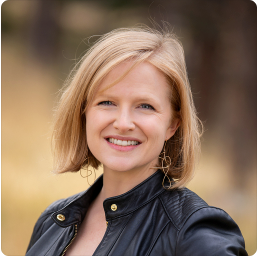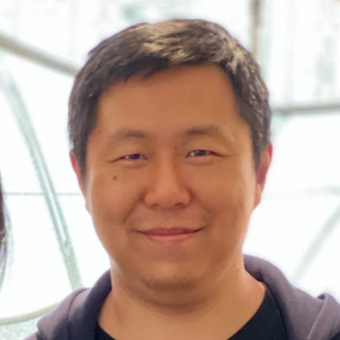As an Engineering org, we are tremendously proud of our accomplishments throughout the history of DoorDash, particularly in recent years as we’ve grown and scaled in service of our customers. This success has been heavily influenced by the strength and leadership of our Eng management team; great companies are built by great people who have great managers. We believe that defining what great Engineering management looks like for DoorDash is critical for our success as a business and, ultimately, for the success of all the Consumers, Dashers and Merchants we serve.
Our agility and bias for action are some of the defining characteristics of our Engineering and company culture, yet even as we grow, we must reflect from time to time and define what has made us successful to date and what will make us successful going forward. It’s for this reason that in Q2 2023, we revisited our performance expectations for all engineers at DoorDash, including our Engineering managers (see this blog post for how we think about fostering meaningful engineering career development).
First, we spent time talking to current Engineering managers and identifying which existing expectations were still relevant, and which ones were no longer serving us. We articulated what we see as the traits of our most successful managers at each level of our management structure based on the culture we are cultivating as an org. We also wanted to provide guidance on how we think about our three management pillars of Business Outcome (how managers set direction and drive impact based on our strategic goals), Team (how managers support individuals, build team culture and partner with other teams) and Engineering Excellence (the quality of our products and systems, how fast we can move, and how efficiently our systems use resources). Now that we have a revised version, we’re leveraging it to provide better support to our Eng managers and demonstrate our company value of getting 1% better every day.
Once we published them internally, we could have stopped there. Yet we know that many other companies, and Eng orgs in particular, are in the same boat with us, navigating a complex working environment as we grow and scale as a business. We also believe in transparency, and want to give Eng manager candidates a clear idea of what kind of management we value in DoorDash Eng. We’ve therefore decided to share them externally, in the hopes that other people and companies can benefit from our perspective on great Engineering management, and leverage our work to shape expectations that feel supportive, fair and transparent in our constant pursuit of a strong culture within Engineering.
- Business Outcome comprises two subcategories: Direction and Delivery. We expect our Engineering Managers to drive business impact by providing technical or product direction to enable engineers to execute projects effectively.
- Team includes three subcategories: Team Building, Career Growth & Coaching and Collaboration & Alignment. Team Building measures how effectively we are building and shaping our teams. Career Growth & Coaching focuses on developing employees and providing consistent ongoing feedback that allows them to grow. Collaboration & Alignment measures how Managers work across different teams and cross-functional partners to drive impact and exemplify our One Team, One Fight mentality.
- Engineering Excellence encompasses three subcategories: Quality, Velocity, and Efficiency. Quality refers to the craft of engineering, delivering software that is reliable, efficient, accurate, scalable, extensible and secure. Velocity is the speed and agility of engineers in developing, testing and deploying code to reduce time to market while ensuring confidence. Efficiency refers to building software that meets intended functions with appropriate resources through efficient code, optimization and reusing existing platforms. Engineering Managers must understand the value of engineering excellence, be adept at making effective tradeoffs and establish a culture of excellence that can scale across the organization. By focusing on Quality, Velocity and Efficiency, engineering teams can deliver products that meet the needs and expectations of their customers and ensure long-term success and continued innovation.
Manager (M1)
Scope: Directly supports an engineering team responsible for the charter and success of a product or platform primitive.
Business Outcome
| Delivery | Consistently delivers against team’s OKRs. Maintains up-to-date knowledge of the team’s execution status. Maintains sufficient technical know-how and product sense to identify risks and remove roadblocks, and keeps stakeholders informed. Minimizes randomization and keeps the team focused with proper processes or tools. |
| Direction | Defines a clear team vision with cross-functional partners on a 6-12 months time horizon. Understands strategies and OKRs of the business unit or platform charter that the team belongs to, and communicates strategic context with their team. Drives their own team’s strategies and OKRs. Drives project prioritization and adjusts priorities based on projected impact, new learnings or business needs. Enables the team to identify opportunities for impact through roadmap planning. |
Team
| Team Building | Accountable for the outcome of team health measurements, e.g., EngageMe, upward feedback, hiring goals, people OKRs. Builds toward a team structure based on projects or stack, and minimizes single points of failure on the team. Able to hire engineers when needed, considering diversity and a balanced composition of skills and seniority within the team. Sets up a safe and inclusive environment for team members to voice their concerns and feedback. Participates in activities that contribute to the larger engineering community, e.g., interviews, learning and sharing. |
| Career Growth & Coaching | Sets clear expectations, gives timely feedback and fosters career discussions with growth plans for all team members. Supports internal mobility for eligible team members. Adheres to performance management standards. |
| Collaboration & Alignment | Builds alignment with cross-functional partners or partner teams on team strategies, OKRs and roadmaps. Supports the success of partner teams. Works with the team to identify dependencies and stakeholders, builds alignment with them on ownership and priorities, and communicates unresolved misalignment and ambiguities. |
Engineering Excellence
| Quality | Defines, measures and drives quality OKRs, e.g., SLOs, and adopts best practices. Builds alignment with cross-functional partners or partner teams to balance quality and speed. Maintains a deep understanding of how to build quality software. Ensures the team adheres to quality standards on architecture, coding, testing, deployment, reliability, security and compliance. |
| Velocity | Identifies areas that slow down velocity, e.g., tech debt, tools and documentation, process friction, etc. Proactively optimizes team velocity with 3-6 month solutions. Makes tradeoffs and drives decisions between adopting existing tech vs. building new. Drives velocity outcomes with measurable results. |
| Efficiency | Tracks the team’s hardware and service footprint. Drives best practices and identifies opportunities to reduce costs with quality and velocity tradeoff considerations. Collaborates with partner teams on adapting technologies and processes to improve efficiency. |
Senior Manager (M2)
Scope: Supports multiple products or platform primitives with a coherent charter. The charter typically consists of 3-5 teams supported through M1s and senior individual contributors, with exceptions in specialized areas.
Business Outcome
| Delivery | Consistently delivers against the OKRs of all sub-teams. Maintains check points of teams’ execution status, and proactively identifies and closes execution gaps. Enables capacity reallocation across sub-teams for greater impact. |
| Direction | Defines a clear and cohesive team vision with cross-functional partners on a 6-12 months time horizon. Contributes to strategies and OKRs of the business unit or platform charter that the team belongs to, and brings their teams onboard. Drives their own team’s strategy and defines OKRs that ladder up to those of the business unit or platform charter. Drives prioritization and deprioritization across subteams based on short-term and long-term impact, new learnings or strategy changes of the larger organization. Ensures effective roadmap planning on sub-teams. |
Team
| Team Building | Accountable for the outcome of team health measurements. Creates a team structure with clear ownership. Develops autonomous teams through effective delegation to M1s and senior individual contributors, and minimizes single points of failure for critical roles on the team. Able to hire E6+ and M1s when needed, and builds toward a balanced composition of skills, seniority and diversity. Proactively identifies and closes gaps in experience and belonging of team members. Participates in activities that contribute to the larger engineering community. |
| Career Growth & Coaching | Assesses manager effectiveness in their career growth/coaching responsibilities. Helps identify across-subteam projects to facilitate senior individual contributor growth. Advocates for internal mobility outside their own team. Maintains a consistent bar on level expectations and performance assessment across subteams. Identifies and closes gaps in performance management. |
| Collaboration & Alignment | Independently drives cross-functional, cross-team alignment on team strategies, OKRs and roadmaps. Contributes to the success of partner teams. Proactively manages dependencies and stakeholders, actively resolving ambiguities and misalignment on ownership and priorities. |
Engineering Excellence
| Quality | Identifies gaps and strategizes quality OKRs across teams. Advocates for these OKRs with cross-functional partners, balancing quality with business needs. Drives collaboration and alignment across functions and teams to deliver against quality OKRs. Defines principles to guide the team to make tradeoffs between quality and speed. Maintains check points of software quality, minimizes regressions, and ensures longevity of software deliveries. |
| Velocity | Maintains a holistic view of their team's velocity status. Proactively prioritizes work and adjusts processes to improve team velocity. Anticipates business needs and technical tradeoffs on a 12 month time horizon, and defines principles to guide the team to make tradeoffs between short- and long-term velocity gains. Drives investments in software building blocks or platforms with velocity outcomes, and connects them with customer impact. |
| Efficiency | Understands the team’s cost factors and trajectory. Defines efficiency metrics and drives ROI for technology decisions. Drives and promotes abstractions and platforms agnostic to specific technologies. Strategically invests in technologies, e.g., adaption of platforms, retirement of systems, to simplify architecture and improve overall efficiency. |
Director (D1)
Scope: Supports the engineering organization of a business unit or a platform charter that directly impacts the company's success. The charter typically consists of 5-8 teams supported through M2s, M1s and senior individual contributors.
Business Outcome
| Delivery | Consistently delivers against the business unit strategies and OKRs, or platform OKRs with clear business outcomes. Creates processes to assess teams’ execution status and promote visibility. Sets up decision making frameworks to resolve ambiguities. Enables capacity reallocation across organizations for greater impact. |
| Direction | Defines a clear and cohesive vision for a business unit or platform charter on a 1-2 year time horizon. Understands company strategies and OKRs and brings their organization onboard through proactive communication. Drives strategy and OKRs of their own business unit or platform charter and aligns those of sub-teams accordingly. Drives prioritization of their own team, and contributes to new investment or divestment decisions based on short-term and long-term impact, new learnings and strategy changes of the company. Drives roadmap planning process of their own organization. |
Team
| Team Building | Accountable for the outcome of team health measurements of their organization. Creates an organizational structure with clear accountability on team OKRs. Develops autonomous teams through effective delegation to M1s/M2s and senior individual contributors, and creates a succession plan for critical roles in the organization. Able to hire senior leaders at E6+/M1/M2 level when needed. Accountable for a balanced composition of skills, seniority and diversity. Drives people programs for their own organization to improve experience and belonging. Contributes to engineering-wide or company-wide people programs/OKRs. |
| Career Growth & Coaching | Proactively improves manager effectiveness in their organization. Accountable for growth plans for the whole organization. Advocates for internal mobility and growth opportunities across the company. Mentors managers across organizations. Drives performance calibration of their own organization that adheres to company standards. Identifies and closes gaps in performance management for leadership roles. |
| Collaboration & Alignment | Drives cross-functional, cross-org alignment on strategies and OKRs of the business unit or platform charter to serve all end customers. Contributes to the success of partner organizations. Creates processes to help the team identify and manage dependencies and stakeholders. Provides systematic decision making frameworks or working models, e.g., shared goals and guardrails. |
Engineering Excellence
| Quality | Creates processes to assess and improve teams’ quality OKRs, drives accountability across the organization and measures business outcomes. Empowers senior individual contributors to define a technical vision, on a 1-2 year time horizon, to evolve product and engineering quality. Accountable for the adoption of company standards and introduces technologies and methodologies to improve software quality. |
| Velocity | Creates processes to assess and improve teams’ velocity. Creates and maintains strategic tech investments on velocity on a 1-2 year time horizon. Owns velocity Eng OKRs and drives accountability across the organization. Accountable for customer impact from velocity gains. |
| Efficiency | Owns and drives org wide efficiency goals and drives accountability. Achieves business outcomes with cost efficiency. Develops a strategic 1-2 years roadmap on technology investment and direction with efficiency consideration. Be aware of state-of-the-art technologies and makes principled decisions on build vs buy. |
Senior Director (D2)
Scope: Supports multiple organizations that directly impact the company’s success with a coherent charter. The charter typically consists of 3-5 organizations supported through D1s, M2s and senior individual contributors.
Business Outcome
| Delivery | Consistently delivers against multiple business units’ strategies and OKRs or multiple platform OKRs with clear business outcomes. Maintains awareness of teams’ execution status. Proactively identifies and closes gaps that impact the assessment and visibility of execution and decision making. Enables capacity reallocation across business units or platform charters for greater impact. |
| Direction | Defines a clear and cohesive vision on a multi-year time horizon, for multiple business units or platform charters, for the greater success of the company. Contributes to company strategies and OKRs, and brings their organization onboard by fostering context sharing across business units or platform charters. Drives their own strategy and OKRs that ladder up to those of the company. Drives new investment or divestment decisions based on new learnings, market dynamics or technology trends. Drives roadmap planning process across organizations. |
Team
| Team Building | Accountable for the outcome of team health measurements of their organization. Creates an organizational structure with clear accountability for business outcomes. Develops autonomous organizations through effective delegation to M2s/D1s and senior individual contributors, and creates a succession plan for critical roles in the organization. Able to hire senior leaders at E7+/M2/D1 level when needed. Accountable for a balanced composition of skills, seniority and diversity. Identifies systemic patterns in experience and belonging across organizations; amplifies strengths and addresses weaknesses, sharing learning across organizations. Drives engineering-wide or company-wide people programs/OKRs. |
| Career Growth & Coaching | Maintains awareness of and creates systematic programs for manager effectiveness in their organization. Creates processes for talent identification and growth planning. Identifies internal mobility and growth opportunities across the company, contributes to engineering-wide people growth programs or frameworks. Drives performance calibration principles and processes in their own organizations. |
| Collaboration & Alignment | Drives alignment across business units or platform charters to contribute to the success of all end customers. Extracts patterns from ambiguities and misalignments and drives changes to decision making frameworks or working models. |
Engineering Excellence
| Quality | Maintains awareness of team’s quality OKRs and drives accountability across multiple organizations. Proactively identifies quality opportunities to drive business outcomes. Collaboratively builds, adopts and promotes principles, frameworks, processes and technologies to improve quality across the engineering org on a multi-year time horizon. |
| Velocity | Maintains awareness of velocity across organizations. Creates a vision and defines velocity eng OKRs that incentivize investments on velocity with a multi-year time horizon. Provides principles to make build or buy decisions that endure product and technology evolutions. Evolves velocity Eng OKRs and correlates them with lasting customer impact. |
| Efficiency | Defines and owns efficiency goals across multiple organizations. Drives efficiency OKRs and accountability across organizations. Collaboratively builds, adopts and promotes principles, frameworks, processes and technologies to improve efficiency. Makes bold bets to accelerate efficiency and reduce cost. Defines multi-year efficiency strategy including vendor selection, technology adoption, budgeting planning and tracking. |
Stay Informed with Weekly Updates
Subscribe to our Engineering blog to get regular updates on all the coolest projects our team is working on




